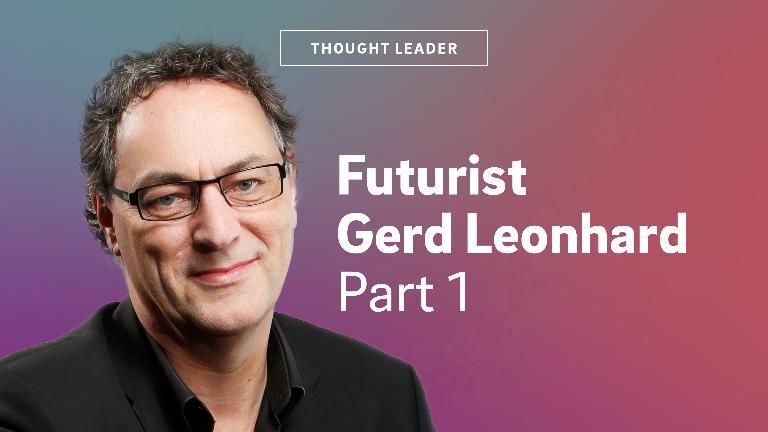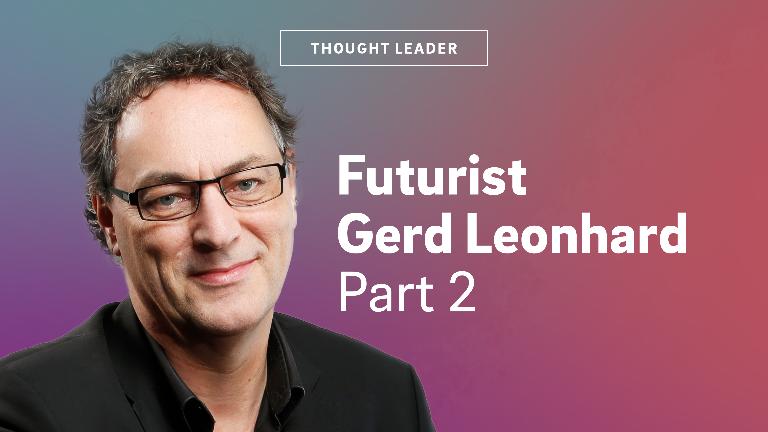Embracing the unknown
![{[downloads[language].preview]}](https://www.rolandberger.com/publications/publication_image/ta_34_001_en_cover_download_preview.jpg)
Nothing could have prepared us for the end of predictability. Think:Act magazine explores how we can plan for an uncertain future.



by Steffan Heuer
Illustrations by MUTI
Photos by iStockphoto
Read more about the topic "The Unknown"
Thinking about the future has always been enticing, but the advent of nuclear weapons and computers turned a passion into a profession to try to see and get ahead of outlier events.
Homo sapiens is, by most accounts, the only species that can "think" about "the future": the unknown next chapter, momentous change and catastrophic turning points. And we've been bad at it, argued financial trader-turned-philosopher Nassim Nicholas Taleb in his 2007 bestseller The Black Swan. In it, he postulates that "the world is dominated by the extreme, the unknown, and the very improbable ... all the while we spend our time engaged in small talk, focusing on the known and the repeated." He applied a catchy label to such outlier events, "black swans," inspired by the rare birds the Old World didn't know existed before the discovery of Australia in the early 17th century.
"What makes a difference are non-causal surprises, the flashes and bright novas in the evolutionary chain."
Taleb is speaking of frightful fowl, or events that are characterized by three things: They are rare, have an extreme impact and provide humans with retrospective predictability – meaning experts will, in hindsight, find a way to explain them away. Think disastrous stock market crashes, the attacks of 9/11 or the collapse of the Soviet Union. Taleb's main criticism was aimed at the forecasters who are not only unaware how error-ridden their work is, but live and work in denial.
The Black Swan made Taleb a famous writer and sought-after lecturer as the Great Recession was rattling the world. Yet his book, which grew into a five-part miniseries, is hardly an unexpected outlier in trying to make sense of what seems unpredictable, chaotic and nebulous. In fact, he stands in a long line of forecasters who use more or less scientific approaches – instead of mystical or religious ones – to analyze what the future holds and where the next catastrophe (or big opportunity) might lurk. This type of rigorous future thinking and scenario planning that tries to take external shocks into account goes back at least to the post-World War II era, when the threat of nuclear annihilation and the rise of computers made "futurist" a venerable profession with an urgent brief.

78% of the value of the NASDAQ composite was lost in the dotcom crash in the early 2000s.
One such forecaster of the early days is Theodore Gordon. The 90-year-old futurist developed a concept called Trend Impact Analysis (TIA) back in the 1970s that explicitly deals with the unexpected Taleb popularized. Today, he is a senior fellow at the Millennium Project, a think tank affiliated with the United Nations University that does scenario planning for current events such as the Covid-19 pandemic. "There's no such thing as a perfect model," Gordon says. "What makes a difference are non-causal surprises, the flashes and bright novas in the evolutionary chain." Gordon's crucial contribution was an approach that infuses quantitative methods with expert opinions about what crazy stuff the world might have in store for us. "The Black Swan was an important book because it made people pay attention and understand how crucial discontinuities are. TIA didn't have that impact on the field," Gordon admits.
Dig a little deeper, and Gordon, too, stands on the shoulders of other thinkers who have tried to sensitize citizens, government and the corporate world to the impact of outlier events. What hasn't changed as you look through the decades of trying to count black swans is the cast of characters: mostly white males with connections to, or in the employ of, the powers that be. That lack of diversity has seriously impeded how we think about outliers and options, says Swiss futurist Gerd Leonhard . "All of these works are undoubtedly important and build on each other, but you have to ask who ultimately pays for research. We have to get rid of purely academic and military-industrial future thinking," Leonhard argues.
He sees encouraging signs that the field is becoming more diverse but thinks that broader input is urgently needed for another reason: The future is coming at us at an increasingly faster clip. Still, the notion of a "black swan" nobody can see coming is a misnomer, according to Leonhard. He prefers to call game-changing events "gray swans" since we already know momentous disruptions are approaching: catastrophic climate change; powerful and unregulated technologies such as AI; the ongoing merging of man and machine and genetic engineering; and the reckoning of an economic system obsessed with growth. "We create the future with everything we do and don't do," he says. "Outside of that, there are things we truly can't know, like comets crashing and aliens visiting."

$2 trillion vanished from the value of global markets following the UK's 'Brexit' vote in 2016.
Games with a diverse set of participants are one of the most intriguing and inclusive ways to think about outliers. Add empowerment to it, and you arrive at a card game that puts a strong emphasis on inequality and social justice: Afro-Rithms from the Future. It was developed by Lonny Brooks, a communication and media studies professor at California State University in Hayward, southeast of San Francisco. The card deck is a tool to envision multiple futures with "more black storytelling and less white supremacy," as Brooks describes it. "Black people always had to innovate, be futurists – envision a place free of slavery, find their redemption. This was scenario making we can draw upon today." Players work with a deck of 90 individual cards divided between tensions, inspirations and system states. This kind of freewheeling exploration can yield serendipitous results. In one round set in 2030, a participant suggested a tattoo that can be scanned to find out one's heritage and receive slavery reparation funds.
Brooks has honed the game over the past three years and has run it with more than a thousand participants so far, in person and virtually, and is now working on a version that can be played online and potentially with VR headsets. Early interest came from Google, the US health insurance company Blue Shield and UNESCO's Futures Literacy Summit. Inclusion makes for better forecasting and future thinking, the professor is convinced. "The game can help in schools and communities. What if we created a network of the imagination where marginalized groups can present their visions that can be transformed into new cultural activities and policy agendas for legislation so communities come armed with scenarios of the future they can articulate?"

This crowdsourced approach alongside today's unheard-of reams of data and arsenal of analytical tools might turn out to be the best preparation for dealing with future pandemics and the ravages of climate change. Scouting for black and gray swans has already spawned a new kind of proactive science fiction, such as Kim Stanley Robinson's late-2020 book Ministry for the Future. The fictitious agency's mission is as simple as daunting: "Established in 2025, the purpose of the new organization was simple: to advocate for the world's future generations and to protect all living creatures, present and future. It soon became known as the Ministry for the Future."
![{[downloads[language].preview]}](https://www.rolandberger.com/publications/publication_image/ta_34_001_en_cover_download_preview.jpg)
Nothing could have prepared us for the end of predictability. Think:Act magazine explores how we can plan for an uncertain future.
